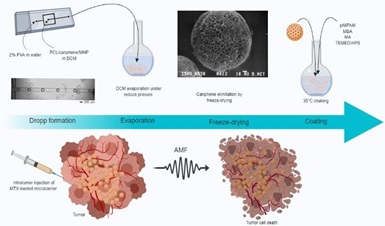
Luis F. Bravo-Duque
National Autonomous University of Mexico (UNAM) Mexico
Title: Microfluidic-based development of thermo-responsive porous magnetic microparticles for Cancer treatment
Biography
Biography: Luis F. Bravo-Duque
Abstract
Multiparticle polymer systems (nano or micrometric) have gained great importance within the development of drug delivery systems (DDS), due to their great versatility and biocompatibility. Conventional manufacturing techniques are generally based on the formation of simple or multiple emulsions to use the drops as a template. The polymer particles prepared by these conventional methods exhibit a great variation between batch and batch in their physicochemical properties, such as average particle size, size distribution, surface charge and release profile. A manufacturing alternative is the miniaturization of the emulsification process by using microchannels to control the droplet size and their size distribution. The handling of fluids with microchannels is also called Microfluidics.
The aim of this project is developed a multifunctional system for a more efficient treatment of tumors, obtained with a robust manufacturing process to control the physicochemical properties of the particles and thus reduce the variation in the manufacturing batches. We have obtained a multiparticle polymeric system with magnetic properties for the treatment of tumors, manufactured with microfluidic devices. This system consists of magnetic iron oxide nanoparticles embedded in porous polymer microparticles of poly-ε-caprolactam (PCL) and coated with a temperature- sensitive co-polymer of poly-N-isopropylacrylamide (pNIPAM), N,N′-Methylenebisacrylamide (MBA) and methacrylc acid (MA). The polymer coat has a transition phase temperature around 43°C where the polymer collapse and the microparticle inside is exposed.
We pretend load Methotrexate (MTX) within the particles pores and by applying an alternating magnetic field (AMF), the nanoparticles will generate an increase in the temperature of the system resulting in the MTX release. The magnetic nanoparticles will also serve to do an in vivo monitoring of the system and tumor by Magnetic Resonance Imaging (MRI).

